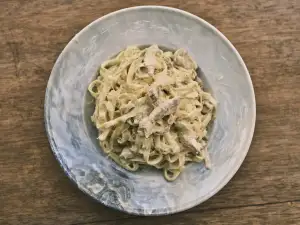Discover the Exquisite Flavors of Tagine: A Moroccan Stew Recipe to Savor

- History and cultural significance of tagine in Moroccan cuisine
- Ingredients required for preparing a delicious tagine
- Step-by-step instructions on how to cook tagine in a traditional pot
- Variations and regional adaptations of tagine recipes
- Tips and tricks for enhancing the flavors of your tagine
- Serving suggestions and popular accompaniments for tagine
- Health benefits of tagine ingredients and cooking methods
- Exploring vegetarian and vegan options for tagine lovers
Tagine, a traditional Moroccan stew, is a culinary masterpiece that tantalizes the taste buds with its exotic flavors. What sets tagine apart is not just its rich blend of spices and ingredients but also the unique pot in which it is cooked. The tagine pot, made of clay or ceramic, has a conical lid that helps to trap and circulate steam, resulting in tender meat and perfectly cooked vegetables. This ancient cooking method ensures that every bite of tagine is infused with the essence of Morocco.
History and cultural significance of tagine in Moroccan cuisine
The tagine holds a special place in Moroccan cuisine, with a rich history and cultural significance. This traditional stew has been cooked in Morocco for centuries, dating back to the Berber tribes. The word "tagine" refers to both the dish itself and the unique pot it is cooked in. The pot consists of two parts - a shallow base and a conical lid, designed to trap steam and circulate heat evenly. This method of slow cooking allows flavors to meld together, creating a truly aromatic and tender dish. Tagine is not just a meal; it represents Moroccan hospitality and is often shared with family and friends during festive occasions. It showcases the country's culinary heritage and reflects the diverse influences that have shaped Moroccan cuisine over time.
Ingredients required for preparing a delicious tagine
To prepare a delicious tagine, you will need the following ingredients:
1. Meat: Traditionally, tagine is made with lamb or chicken. You can also use beef or fish for variation.
2. Vegetables: Onions, carrots, potatoes, and tomatoes are commonly used in tagine recipes. You can also add bell peppers, zucchini, or eggplant for extra flavor.
3. Spices: The key to a flavorful tagine lies in the spices. Cumin, coriander, ginger, turmeric, paprika, cinnamon, and saffron are commonly used. Don't be afraid to experiment with different spice combinations.
4. Herbs: Fresh herbs like parsley and cilantro add freshness to the dish. You can also use dried herbs like thyme or rosemary.
5. Olives and preserved lemons (optional): These ingredients add a tangy and salty flavor to the tagine.
6. Olive oil: Use high-quality olive oil for cooking the tagine.
7. Stock or broth: To create a rich sauce for your tagine, use vegetable or chicken stock.
8. Honey or dried fruits (optional): For a touch of sweetness, you can add honey or dried fruits like apricots or dates.
Remember that these ingredients can be adjusted according to your taste preferences and dietary restrictions.
Step-by-step instructions on how to cook tagine in a traditional pot
To cook tagine in a traditional pot, follow these simple steps:
1. Start by marinating your choice of meat or vegetables with Moroccan spices like cumin, paprika, and turmeric.
2. Heat some olive oil in the tagine pot over medium heat and add chopped onions and garlic. Sauté until golden brown.
3. Add the marinated meat or vegetables to the pot and brown them on all sides.
4. Next, layer sliced tomatoes, bell peppers, and preserved lemons on top of the meat or vegetables.
5. Sprinkle a generous amount of fresh herbs like cilantro or parsley over the ingredients.
6. In a separate bowl, mix together chicken or vegetable broth with spices like cinnamon, ginger, and saffron. Pour this mixture into the tagine pot.
7. Cover the pot with its cone-shaped lid and let it simmer on low heat for about 1-2 hours until the flavors meld together and the meat becomes tender (or vegetables are cooked through).
8. Check occasionally to ensure there is enough liquid in the pot; if needed, add more broth or water.
9. Once cooked, remove from heat and let it rest for a few minutes before serving.
10. Garnish with additional fresh herbs and serve hot with couscous or crusty bread for a complete Moroccan culinary experience!
Variations and regional adaptations of tagine recipes
Variations of tagine recipes are abundant across different regions of Morocco, each offering a unique twist to this traditional stew. In the coastal areas, seafood tagines are popular, featuring fresh fish or shellfish cooked with aromatic spices and herbs. In the mountainous regions, hearty lamb or beef tagines are favored, often combined with dried fruits like apricots or prunes for a sweet and savory flavor profile. The desert regions showcase tagines made with tender camel meat, dates, and fragrant spices like cinnamon and cumin. Vegetarian options also abound, with tagines showcasing an array of vegetables such as carrots, potatoes, eggplant, and tomatoes. These regional adaptations allow for a diverse culinary experience that truly captures the essence of Moroccan cuisine.
Tips and tricks for enhancing the flavors of your tagine
To enhance the flavors of your tagine, here are some tips and tricks to try. First, marinate the meat or vegetables overnight in a mixture of spices, herbs, and olive oil. This will infuse the ingredients with rich flavors. Second, use preserved lemons or dried fruits like apricots or prunes to add a sweet and tangy element to your tagine. Third, don't be afraid to experiment with different spices such as cumin, cinnamon, ginger, and saffron to create a unique flavor profile. Lastly, let your tagine simmer slowly on low heat for a longer period of time to allow the flavors to meld together beautifully.
Serving suggestions and popular accompaniments for tagine
When it comes to serving tagine, there are several delicious accompaniments that can elevate the flavors of this Moroccan stew. Traditionally, tagine is served with warm, crusty bread such as khobz or baguette, which is perfect for soaking up the flavorful sauce. Couscous is another popular choice and pairs well with the tender meat and vegetables in the stew. For a refreshing contrast, serve a side of tangy preserved lemons or olives. Fresh herbs like cilantro or parsley can be sprinkled on top for added freshness. To complete the meal, consider serving a traditional Moroccan salad or a side of harissa for those who enjoy some heat. These accompaniments not only enhance the flavors of tagine but also provide a well-rounded dining experience that truly captures the essence of Moroccan cuisine.
Health benefits of tagine ingredients and cooking methods
Tagine not only delights your taste buds but also offers numerous health benefits. The slow-cooking method used in tagine helps to retain the nutrients in the ingredients. The use of spices like turmeric, cumin, and ginger in tagine recipes provides anti-inflammatory properties. The combination of vegetables, such as tomatoes, onions, and carrots, adds a dose of vitamins and minerals to the dish. Additionally, the use of lean meats or legumes in tagine ensures a good source of protein. So indulge in this flavorful stew knowing that it is nourishing for your body too!
Exploring vegetarian and vegan options for tagine lovers
For vegetarian and vegan tagine lovers, there are plenty of delicious options to explore. Instead of using meat, you can substitute it with a variety of vegetables like carrots, potatoes, bell peppers, and zucchini. Adding chickpeas or lentils can also provide a good source of protein. To enhance the flavors, you can use spices like cumin, paprika, turmeric, and cinnamon. Don't forget to add preserved lemons or olives for that authentic Moroccan touch. With these substitutions and additions, you can create a flavorful and satisfying vegetarian or vegan tagine that will please your taste buds.
In conclusion, embracing the flavors of Morocco with a homemade tagine is an experience that will transport your taste buds to the vibrant streets of Marrakech. The combination of aromatic spices, tender meats or vegetables, and slow cooking in a traditional pot creates a dish that is truly exquisite. Whether you are a meat lover or prefer vegetarian options, there is a tagine recipe for everyone to enjoy. So why not embark on a culinary adventure and savor the rich flavors of Morocco with a homemade tagine?
Published: 08. 12. 2023
Category: Recipes



